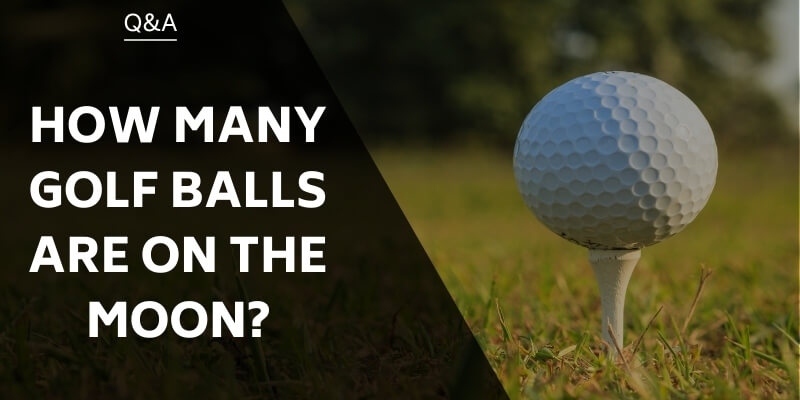|
Getting your Trinity Audio player ready...
|
Humans have sought to answer profound questions about the universe since ancient times.
These include: Where did the universe start? When will it stop growing? Is it infinite? Are we alone in the universe? What is it all about?
But one thing is for sure. These are not the only important questions.
We, as golfers, represent culture and have a deep appreciation of nature, hence why some of us asked the question that matters:
How Many Golf Balls are on the Moon?
We don’t have the answer to life, the universe, and everything, but we do have an answer about these.
Two golf balls on the moon were taken there by Alan Shepard in 1971 during his Apollo 14 mission.
While it isn’t confirmed, the first American to play golf in space was Shepard.
Reason: Having read this sentence, it sounds like he is the only person who played golf in space, but other astronauts have made that same claim which has not been verified.
It appears that Shepard smuggled his golf clubs onboard the Moon Landing, as shown in the transcript of his official recording.
He spoke about it at length with the mission controller back at Mission Control Center.
What do you think?
“Houston, while you’re looking up that contingency sample return, you might recognize what I have in my hand is the handle for a six-iron.
You may know this as an old golf ball retriever! My left hand is a tiny white pellet that looks just like a marshmallow from the classic mallows and chocolate.
To get enough power in his swing, then-NASA astronaut Alan Shepard had to play the best shot of his life with just one hand. He swings and takes the trophy.
“You got more dirt than a ball that time. Says Edgar Mitchell, one of the other astronauts as Alan Shepard tries again
“Hey, Al! You looked like you just lined yourself up for that one.”
After the third swing, Shepard’s club connects with the ball as it flies forth on a low trajectory. After hitting yet another duff, he finally gets the ball up and away.
The two golf balls were left behind and are still up there to this day.
However, Shepard brought home the 6-iron clubhead from the moon and displayed it at the US Golf Association Hall of Fame in New Jersey.
What’s even crazier is that the whole thing was televised, in color, for the enjoyment of golf fans around the world. Here’s a video of it from NASA:
How Far Did the Golf Ball Hit on the Moon Go?
“Miles and miles and miles…” claims Shepard. This is a light-hearted, tongue-in-cheek exaggeration from the infamous and irreverent Alan Shepard. But how far did his shots go?
A couple of months ago, in celebration of the 50th anniversary of the Apollo 14 mission, imaging specialist Andy Saunders teamed up with the USGA to answer a similar question.
Saunders digitally enhanced six archival images that show the mission’s progress and then stitched them together into one high-quality panorama.
Using this picture, Saunders can determine the distance that ball traveled.
Using algebraic principles and a simple Pythagorean Theorem, he concludes with confidence that ball number one traveled 24 yards.
Playing off the moon’s surface is akin to playing out of a bunker.
If you consider that, as Saunders himself puts it, “the moon is effectively one giant, unraked, rock-strewn bunker,” then that makes sense.
It’s theorized that a golfer can generate more incredible clubhead speed on the moon than on Earth because there’s no air resistance or gravity.
In theory, before golfers can refine their form in space suits, they would only be able to swing at the ball for brief moments during their rounds due to the suit limiting
Final Thoughts
Golf can be difficult, but it would be even more challenging to play golf on the moon.







